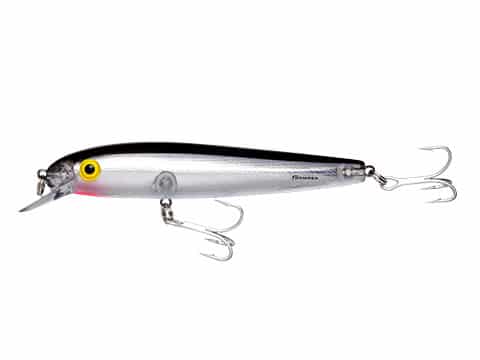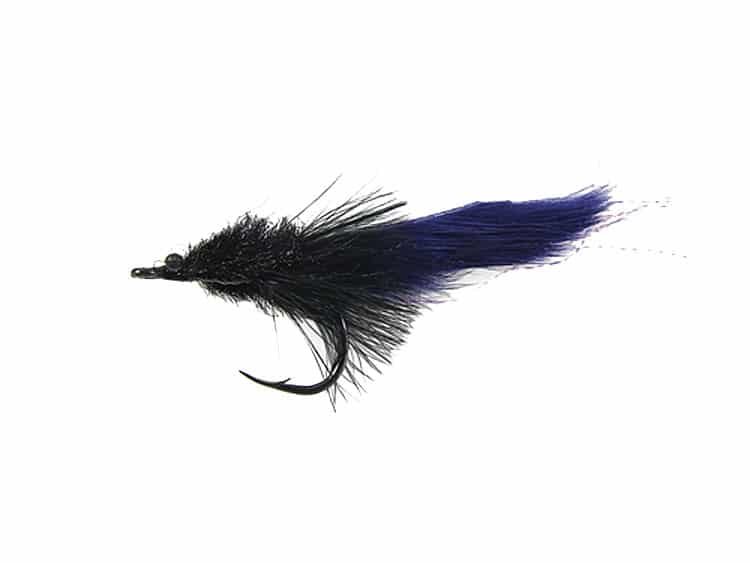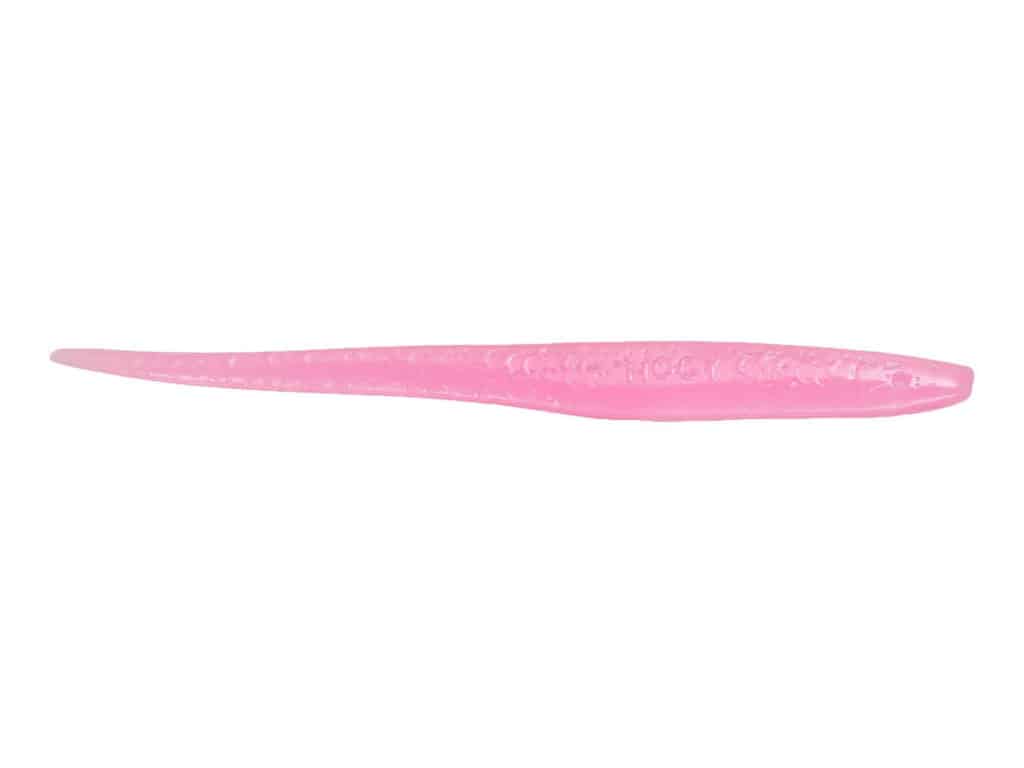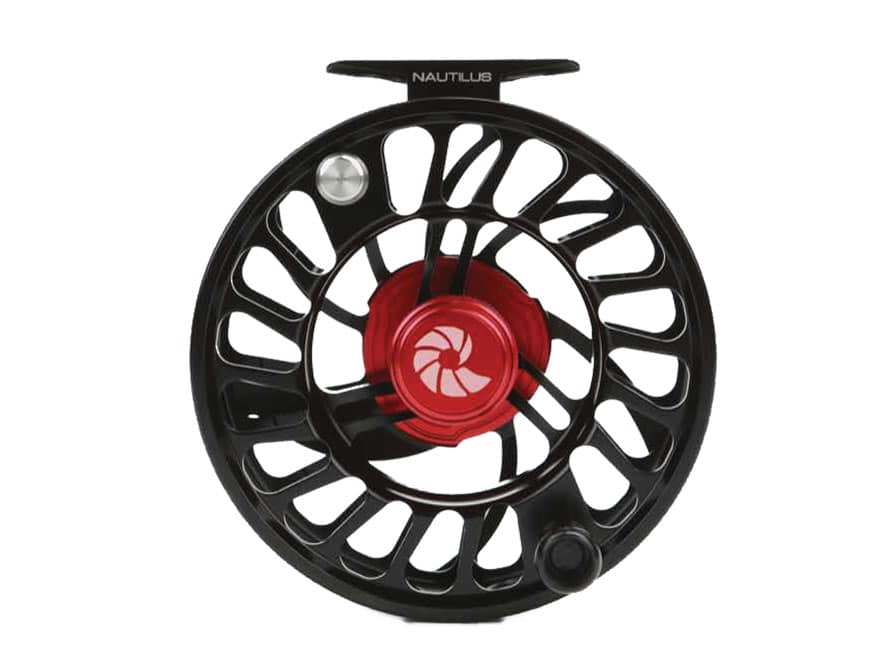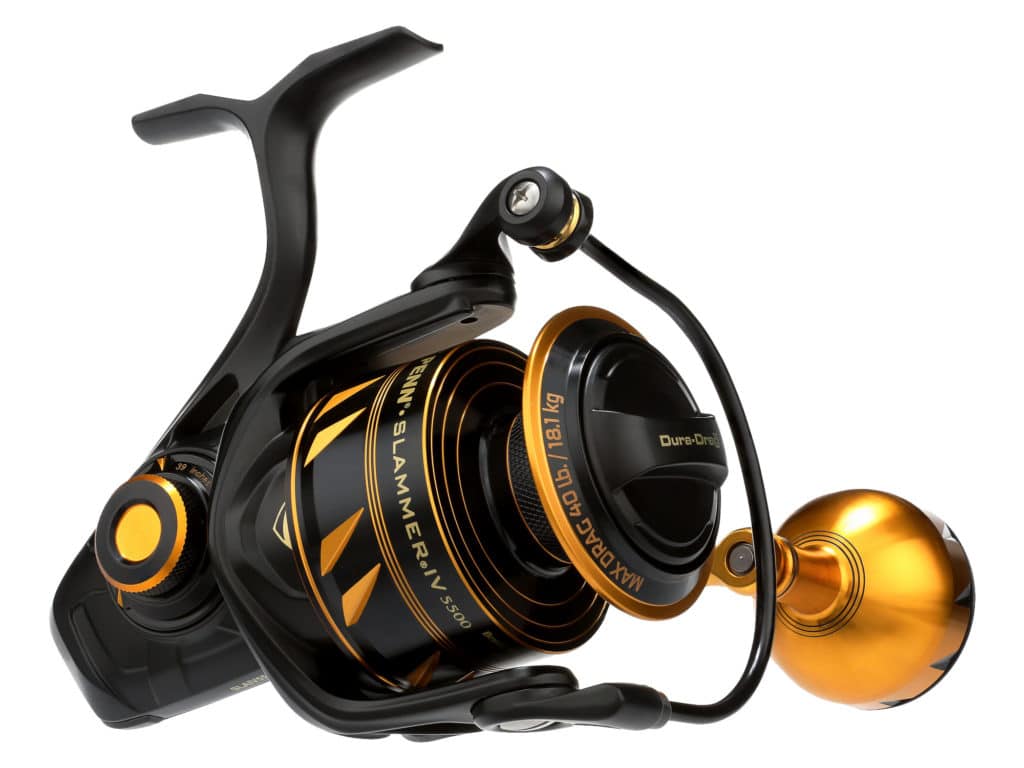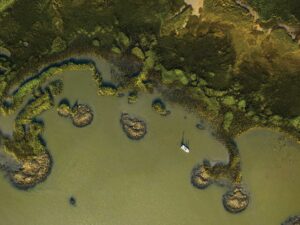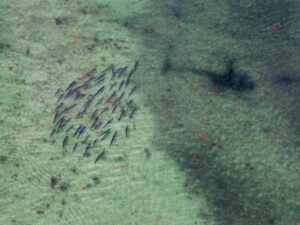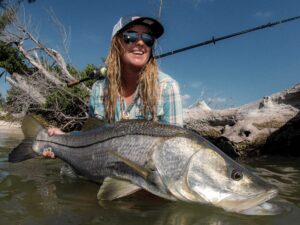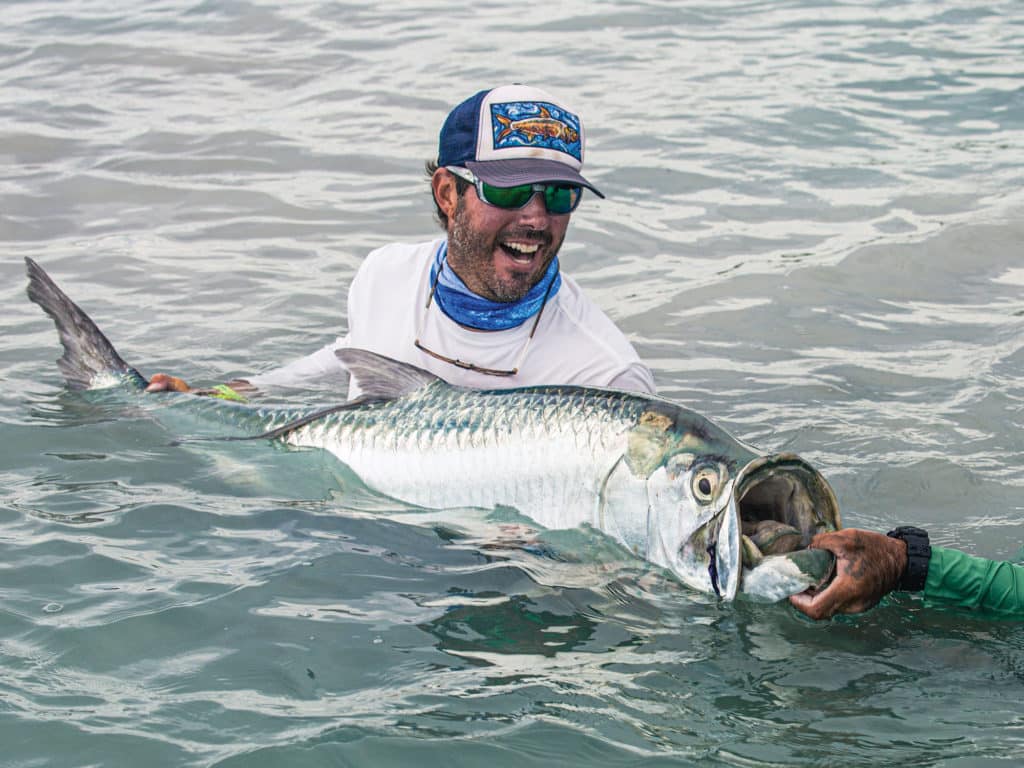
Every year, tarpon trickle into the Florida Keys backcountry with the first warming trends. Sometimes the fish show up as early as the end of January, well before the weather starts to settle in March, and a number of anglers head down to the Keys to tangle with those winter and early-spring silver kings, knowing a cold front could immediately shut down the bite.
In addition to warming waters, Capt. Rick Stanczyk of Islamorada says the annual run of silver mullet draws in the tarpon. “When mullet get going, so do the tarpon,” Stanczyk says. “Usually, it all starts in March and goes into April, sometimes May,” he adds. “That’s when we catch many of our larger fish, the bigger migrating females in the 80- to 120-pound range.”
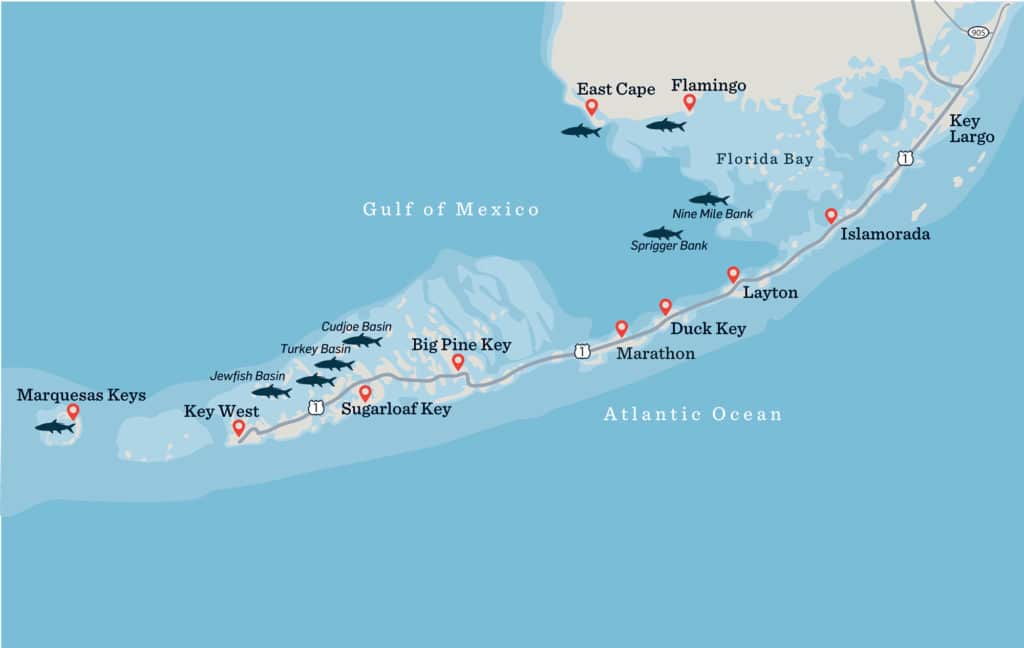
Locating Fish
Finding tarpon can be as easy as looking for fish crashing into schools of mullet or rolling on the surface. If Stanczyk doesn’t see tarpon on the surface as he runs in the backcountry, he studies his side-scan fish finder to pinpoint fish or spots where they might show up later in the tide cycle.
Various basins on the Gulf side of the lower Keys are popular with anglers trying to connect with early arrivals, and so are areas like Nine Mile Bank and Sprigger Bank, north of Marathon, where outgoing tides sweep small fish and crustaceans through breaks in the banks (known as passes), and tarpon wait for an easy meal. So, when Stanczyk locates a dip in an area with hard bottom or a bend in a channel in any of the remote spots he fishes, he marks it on his machine.
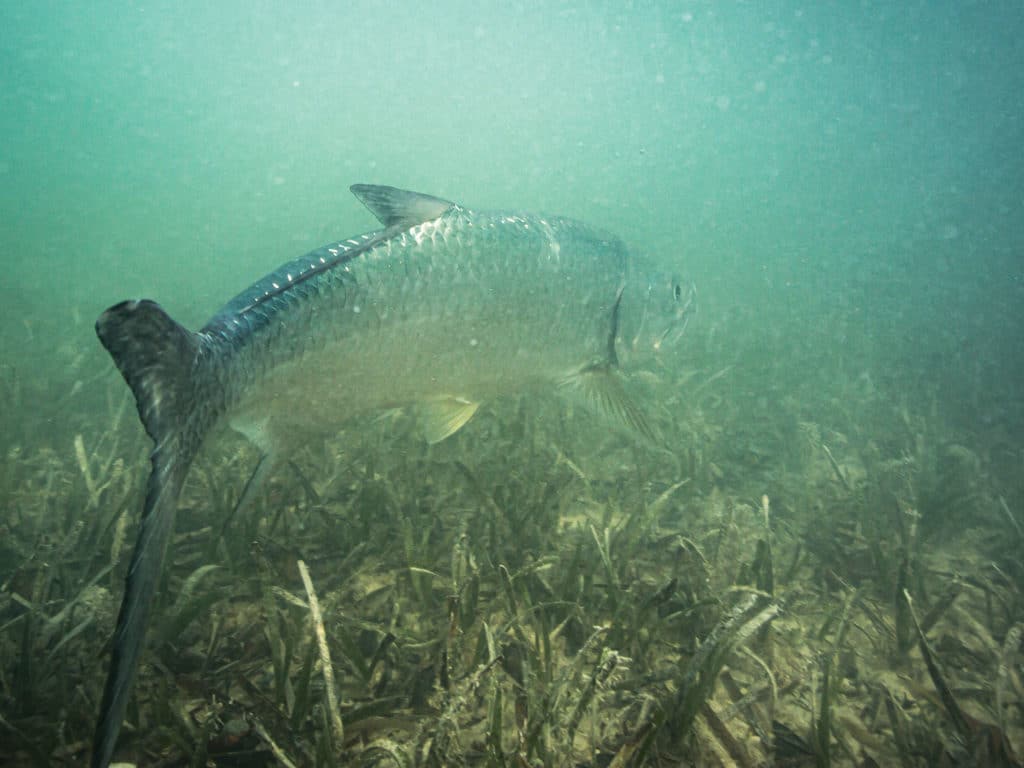
One of the advantages of fishing the backcountry instead of the various popular Overseas Highway bridges that connect the Keys is the scarcity of boats. “In late winter and early spring, there are other boats in the backcountry, but they’re spread out—for miles sometimes—so you don’t feel crowded,” explains Stanczyk, who usually does eight-hour trips starting at 6 or 7 a.m. because it gives him time to run to different areas, some 30 or 40 miles from Islamorada.
Capt. Grif Helwig of Key West has a well-known tarpon hotspot, Key West Harbor, right in his backyard. But like Stanczyk, he likes to get away from the crowds and does it by running 25 miles west to the Marquesas or northeast into the shallow Gulf waters around Summerland and Big Pine keys. Helwig specializes in fly-fishing, but also arms anglers with soft-plastic lures and plugs.
Tuned Tactics
A major attraction of targeting tarpon in the Keys backcountry is the opportunity to sight-fish in shallow water. Capt. Greg Poland of Islamorada stealthily poles his skiff across the flats to afford his anglers the thrilling experience of seeing a 100-pound fish eat their offering in 3 feet of water.
When he’s not guiding fly anglers, he often resorts to live-baiting to better the odds. The trick, Poland says, is to give incoming fish about a 10-foot lead. “You don’t want to cast too close and spook the tarpon, or cast so far away that the fish doesn’t see the bait. When a tarpon eats, you simply need to reel until the fish starts taking drag to set the circle hook.”
Stanczyk prefers to anchor when he sees tarpon rolling or blowing up schools of mullet. He puts his boat in front of the fish and drifts back live baits. “We usually fish mullet, as lively as possible, especially during the bait run,” he says, adding that pinfish are also effective on pleasant spring days.
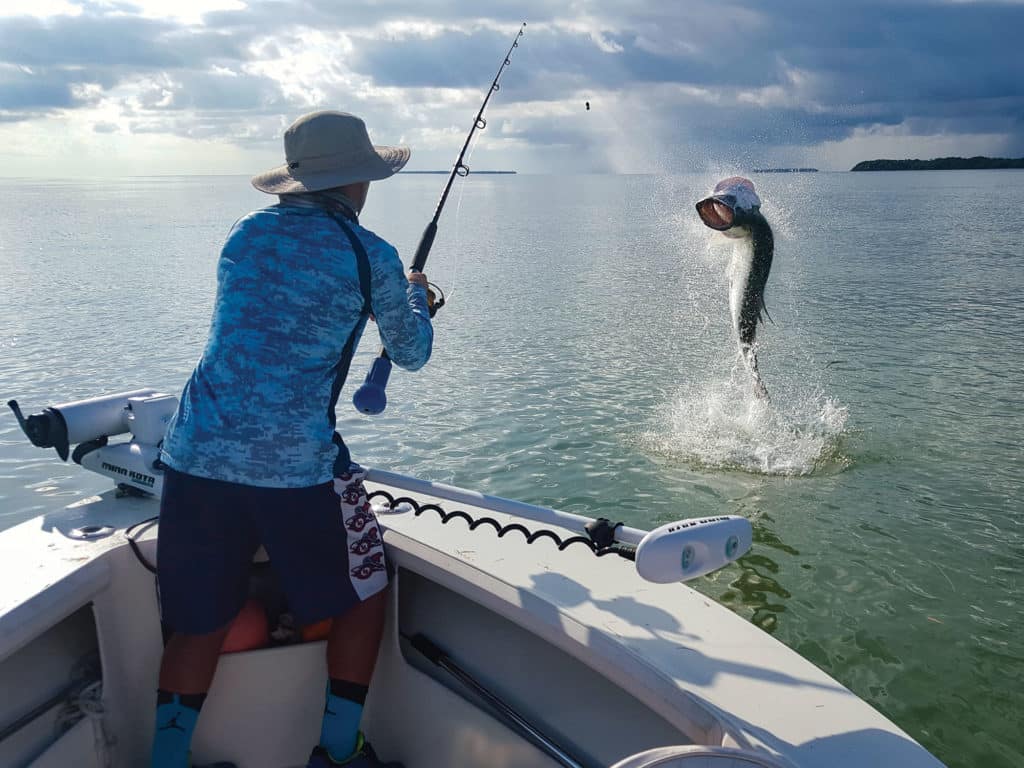
He’ll fish a spot for 20 to 30 minutes. If he doesn’t get any bites, he’ll move. But sometimes he never leaves. On his best day, Stanczyk’s anglers caught 16 tarpon at one spot.
Early tarpon are also willing fly takers, if you make the right presentation. Andy Mill of Boca Raton, Florida, who has won the three most prestigious tarpon fly tournaments in the Keys, says success depends on reading the fish and how it’s swimming. “You just have to understand the tarpon’s body language. Whether it’s moving fast or slow and easy, you must keep the fish’s pace with the fly.”
If a fish is deep and facing into the current, Mill recommends casting short of the fish and letting the fly sink so when the tarpon encounters it, it’s right in front of its face. In that situation, casting directly to the fish -usually ends with the fly drifting over the tarpon as it swims by. “The key is to let the fish see the fly,” says Mill, who likes flies tied on sharp 1/0 hooks that quickly penetrate a tarpon’s hard mouth, made with materials like marabou or rabbit strip, which pulsate enticingly in the water.
Gearing Up
Given the likelihood of catching tarpon of 100 or more pounds, Stanczyk uses heavy spinning outfits spooled with nearly 300 yards of 50-pound braided line so his anglers can quickly bring in and release the fish. He adds 20 feet of 60-pound monofilament to the braid, attaches a swivel, and ties on a 6- to 8-foot leader of 100-pound mono, or 60- to 80-pound fluorocarbon if the water is clear. He affixes a foam float to the swivel and pins a live mullet on a 5/0 to 8/0 J hook, depending on bait size.
Poland opts for lighter tackle when live-baiting on the shallows. His setup is simple: spinning gear, 15-pound braided line, 4 feet of 60-pound fluorocarbon leader, and a 4/0 circle hook. His preferred baits are small blue crabs, pilchards or pinfish suspended below a cork.
When not fly-fishing, Helwig uses medium-action spinning gear with 40-pound line and a 10-inch Hogy Eel on a circle hook, or a Bomber Wind-Cheater plug with the lip cut off and both trebles swapped for single hooks.
Mill gears up for big tarpon by using fly reels made for billfish and 650 yards of braided line for backing. The large-diameter reels let him gain line faster, especially advantageous when closing the gap on a running fish and when a tarpon is close to the boat and coming up.
Read Next: Four Places in Florida to Catch Tarpon Year-Round
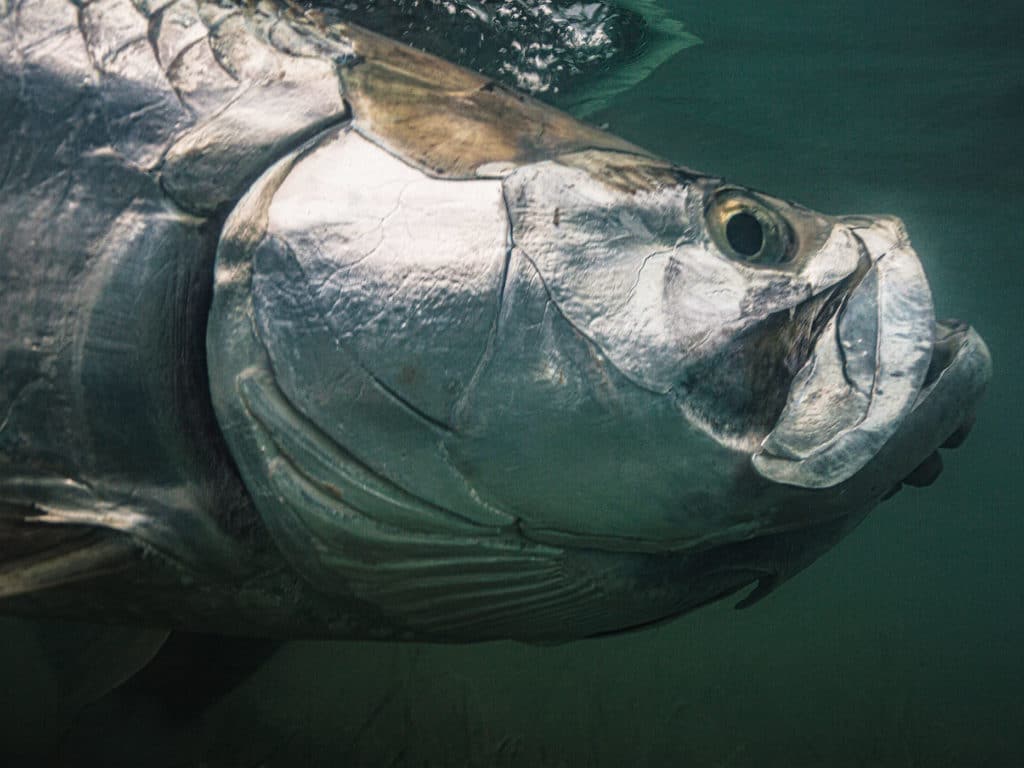
Taming Tarpon
When they hook a big tarpon, many anglers immediately apply pressure. That can be a mistake, Stanczyk claims. “In the beginning, you don’t want to pull real hard and use a lot of force because the fish is also using a lot of force, so something’s probably going to break or the hook’s going to pull,” he says. “I tell my anglers to keep a light drag at first, and just reel enough to keep the line tight. After five or 10 minutes, once the fish settles and isn’t running and jumping, it’s time to tighten the drag and put more pressure on,” Stanczyk says.
When a tarpon eats a fly, Mill waits until he feels the weight of the fish, then strip-strikes to drive the hook home.
He then concentrates on clearing the portion of fly line coiled on the casting deck before applying the maximum pressure his tippet will take to tire the fish quickly. Mill stays alert throughout the fight, ready to point the rod at the fish while also extending his arm when the tarpon jumps to prevent it from landing on a taut leader and breaking off.
Whatever tackle you use, if a tarpon gets away, don’t get down. In the Keys, you’re bound to get more shots.
SWS Planner: Preseason Keys Tarpon
- What: Early tarpon
- When: Tarpon begin showing up in the Keys during warming periods in late winter and early spring, becoming more consistent in March and April, and plentiful from May through early July
- Where: Flamingo, Nine Mile and Sprigger banks, lower Keys basins, and other tranquil backcountry areas
- Who: The following Keys guides are tarpon experts in tune with the fish’s movements:
Key Largo
Capt. George Clark Jr.
rodeocharters.com
305-522-2638
Islamorada
Capt. Rick Stanczyk
islamoradatarpon.com
305-747-6903
Capt. Greg Poland
gregpoland.com
305-393-3327
Key West
Capt. Grif Helwig
endlesssummerfishingcharters.com
904-699-2315
Early-Tarpon Weaponry
